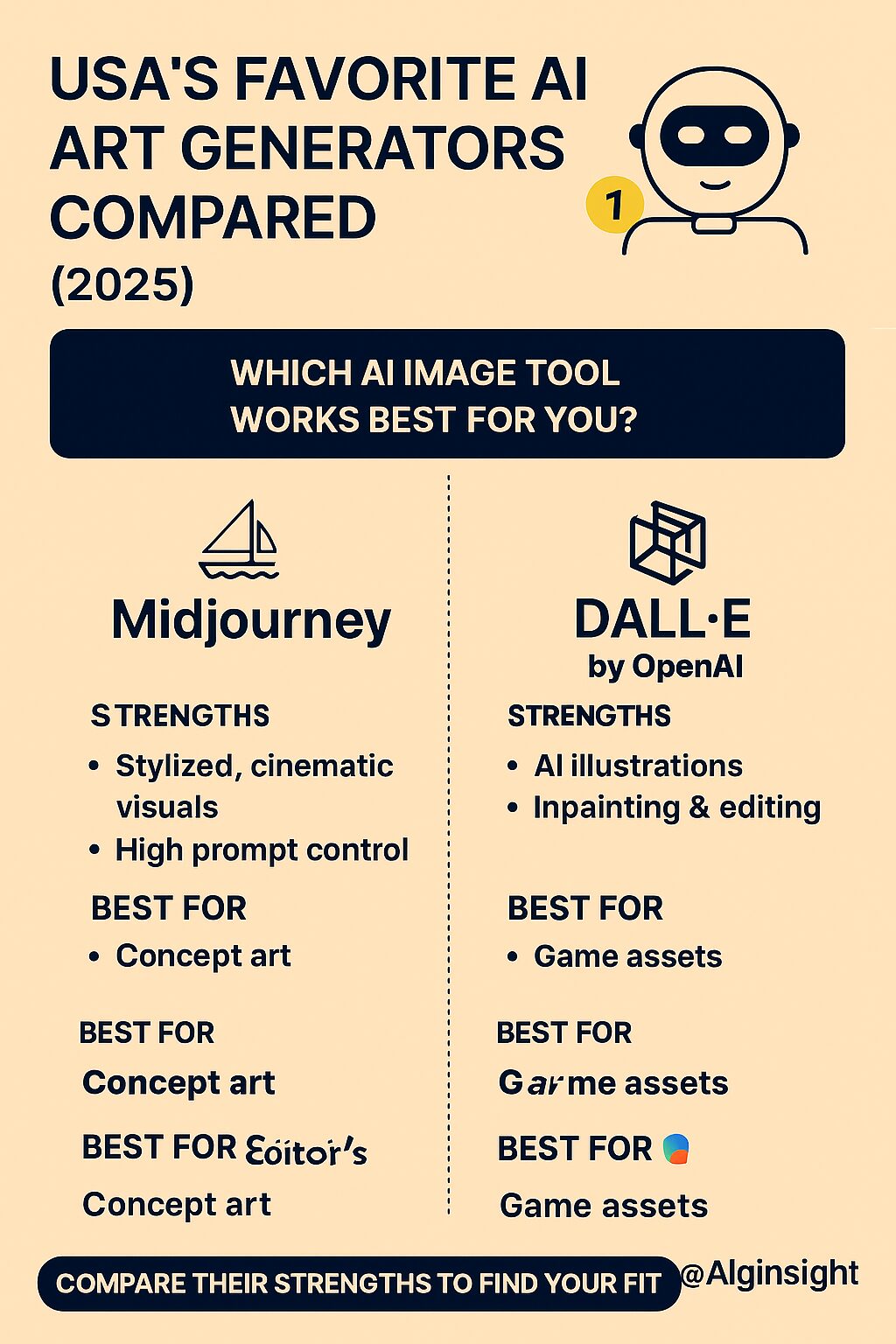In 2025, AI art generators have become essential tools for designers, marketers, educators, and creators across the USA. Whether you’re building brand visuals, concept art, or social media content, choosing the right platform—Midjourney, DALL·E, or Leonardo—can dramatically impact your workflow and results. This guide compares the top three AI art tools based on features, strengths, limitations, and ideal use cases.
🧠 Why AI Art Generators Matter in 2025
AI image tools now offer:
- Text-to-image generation with stunning realism or surreal creativity
- Style control, prompt engineering, and upscaling
- Commercial licensing and brand-safe outputs
- Integration with design workflows and creative platforms
🎨 Midjourney: The Artist’s Playground
- Best For: Stylized, cinematic, and imaginative visuals
- Strengths:
- High aesthetic quality
- Rich prompt control and stylization
- Discord-based community and iterative feedback
- Limitations:
- No direct browser interface
- Limited realism for photorealistic tasks
- Use Cases: Concept art, fantasy illustrations, editorial visuals
🧠 DALL·E by OpenAI: The Precision Engine
- Best For: Illustrations, surreal art, and conceptual design
- Strengths:
- Text-to-image accuracy
- Inpainting and editing tools
- Integrated with ChatGPT and Microsoft tools
- Limitations:
- Less stylized than Midjourney
- Limited realism compared to competitors
- Use Cases: Educational visuals, brand-safe content, editorial design
🖌️ Leonardo AI: The Versatile Workhorse
- Best For: Game assets, character design, and commercial illustrations
- Strengths:
- Multiple models (e.g., Leonardo Diffusion, Alchemy)
- Style presets and prompt templates
- Fast generation and batch processing
- Limitations:
- Requires account setup and credits
- Less community-driven than Midjourney
- Use Cases: Game development, product design, marketing visuals

